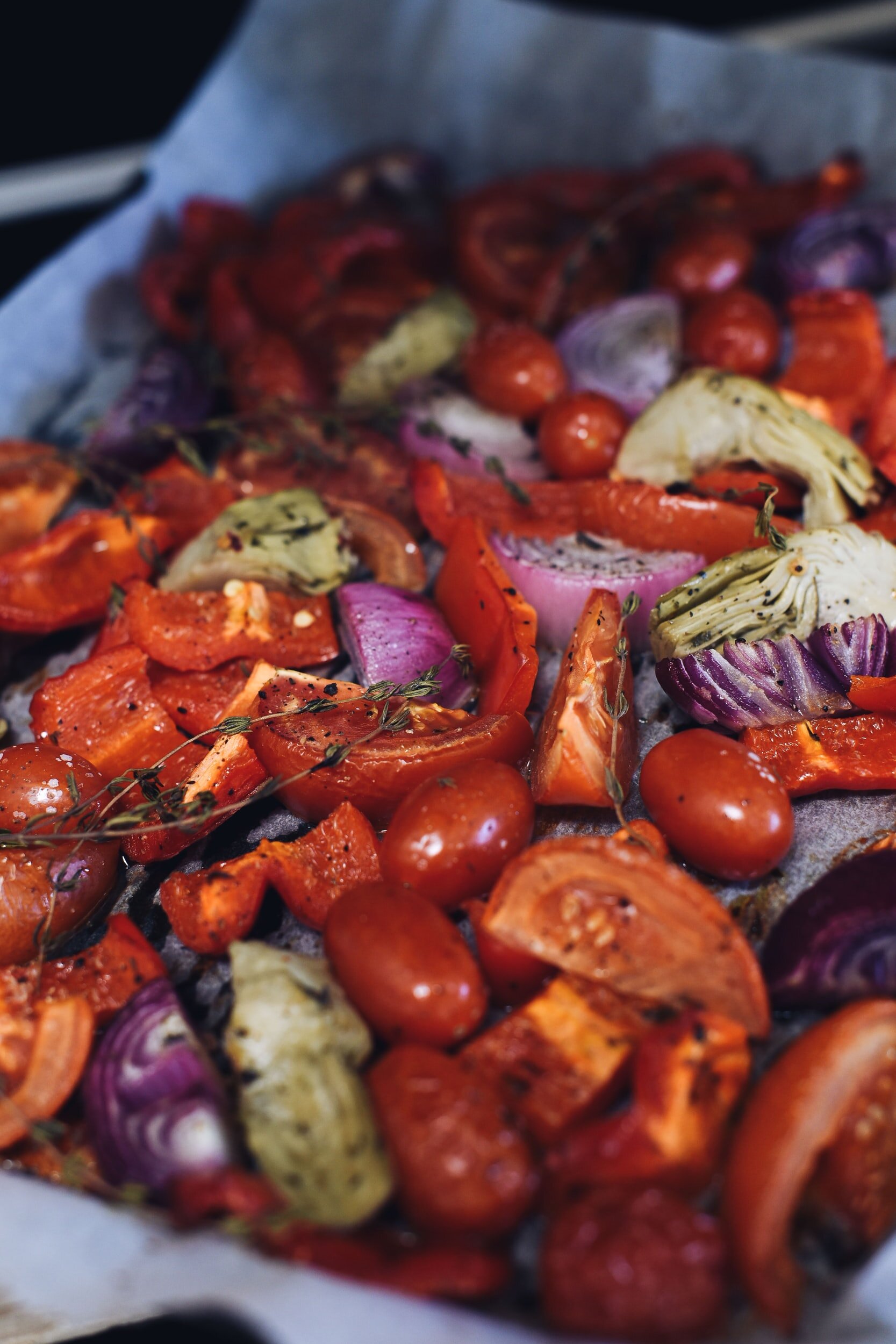Make the most out of your veggies
Take your vegetables from bland and basic to full of flavor.
#eatmoreveggies #organic #thewellbeingstl #roastedvegetables
When i hear someone say, "I don't like Brussels sprouts", I think, "Ah, you must have never had them the way I make them!" But truthfully, it's less about that - I might like adding a spice you don't favor. Really, it's pretty simple:
The flavor of your food depends on two things - where they come from and how you treat it.
Where the food comes from
We've gotten to the point where, when asked where food comes from, most people say the grocery store. As a culture, Americans dissociate "food" from "things that grow from the ground or walked around". Even those who try to eat well reach for quick, processed foods and search for labels to read. Unfortunately, I've yet to see a sweet bell pepper grow with a USDA food label on it, or a potato be pulled from the ground with serving size and calories printed on it. These foods are perfect just the way the are. Adding flavor enhancers, chemicals and food dyes improve anything; in fact, it strips away the inherent goodness.
As you're looking for foods, consider how many steps it has taken to get to you and how much manipulation occurred along the way.
Let's start with where it's grown:
1. Knowing where your food was grown or raised means you have more information about what went into the production of that item.
Does that farm rotate crops? Crops get their nutrients from the soil in which they grow; different crops need different nutrients, so rotating crops ensures the soil has time to replenish for each crop.
How far is the farm from you? You've heard "buy local", but why? Local farms produce seasonally-fresh fruits and vegetables, which means they are at the peak of ripeness and therefore have the most nutrients. They're also likely to be fresher and riped on the tree/vine instead of in a warehouse. Locally-sourced foods also take less time to get to your kitchen, so they're fresher. Supporting local farmers also supports your local economy.
How it's grown: Understanding the conditions in which food grows is also incredibly important. The use of pesticides introduces chemicals that may accumulate in the body and disrupt biological function. As a result, the term "organic" has become synonymous with "healthy", but as much as we want simple labels to give us the answer, it's not that easy.
The FDA regulates the term "organic". Certification as "organic" guarantees that the product is free from synthetic fertilizers, lacks genetic modification, and produced in a way that supports the health of the farm. Yet, since getting certified is often cumbersome and costly, this designation is often only available to larger farms and industries. Smaller farms may follow the same guidelines but cannot afford (or choose not to pay for) organic certification, so ask your local farmer about their practice - most are happy to talk to you about it.
How the food is made.
Instagram-worthy pictures are great - they whet our appetites for great food - but sometimes, the results look too complicated to replicate. Fortunately, it's way easier than that. Once you have good ingredients, the preparation is really simple.
Roasted beets, carrots, and onions get caramelized during the roasting process.
Roasting brings out the amazing flavors and natural sugars of your food.
Yes! Believe it or not, fruits and vegetables have sugars (complex carbohydrates) in them, and cooking at a high heat will caramelize these sugars to make your food taste incredible.
I separate roasted vegetables into two groups: cruciferous and root vegetables. They cook at different rates, so for ease, I roast them on two separate sheets. (This isn't necessary - the mix of flavors is often wonderful if you blend them. Just do what makes you happy! One sheet is also easier for cleanup.
Wash and dry all produce. Cut each vegetable into consistent, bite-size pieces and arrange on the sheet. (One key to roasting - make sure the vegetables are spaced apart! If they're too close, the water evaporating from the vegetables will steam them instead of roast!) Also, I roast on a silpat sheet because nothing sticks to it - it's amazing. I think I actually bought mine at HomeGoods.
Here's my go-to mix of roasted vegetables:
Roasted Vegetables
Preheat the oven to 425 degrees.
*Sheet 1:
1 head of cauliflower
1 small crown of broccoli
15-20 small, dense Brussels sprouts
*Sheet 2:
1 large sweet potato
3-4 rainbow carrots (they don't have to be rainbow - i just love the color!)
1-2 beets, red or golden
5-7 new potatoes
Drizzle your vegetables with a good quality grape-seed or avocado oil (avoid using pure olive oil due to its low smoke point.) From about a food above the tray, sprinkle with salt and pepper. Toss to coat. Roast in the oven for: Sheet 1 = ~20min; Sheet 2 = ~30min. (These are estimates of time. Rotate the food about halfway through to get a golden brown all the way around. If it's not roasted enough at the end of the time, add 5 min.)
Serve over quinoa or brown rice.
More flavor?
Want to kick the flavor up a notch? Add some herbs and/or spices. Thyme, sage, and rosemary are all easily accessible and add lovely flavor to vegetables. Garlic also adds depth to broccoli, and pairs well with a squeeze of fresh lemon!
We could all use some simple ways to make veggies delicious — something the whole family will love.
What could be simpler than a sheet of cut up veggies?


